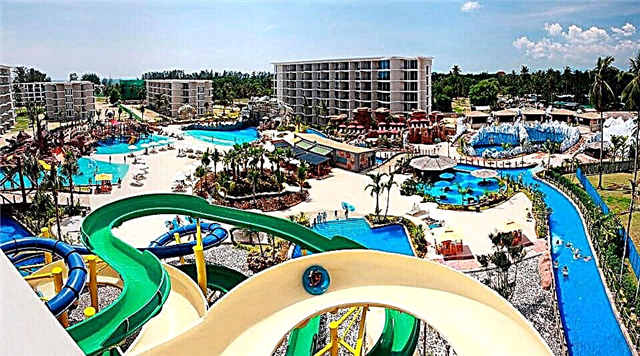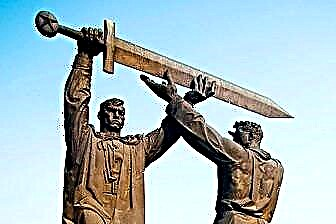Address: Estonia, Tallinn
Coordinates: 59 ° 26'28.4 "N 24 ° 44'43.7" E
Content:
Short description
Tallinn citizens and tourists looking for adventure can walk along the fortress wall. The entrance to the wall is possible at the intersection of Suur-Kloostri and Väike-Kloostri streets: for a ridiculous fee, the visitor will go up to the Nunne tower, and from there, along the battle course, will go to the Sauna and Kuldyala towers.

Until the 16th century, the section of the city fortifications overlooking Suur-Klostri Street belonged to the Cistercian monastery of St. Michael. The construction of the local fortress walls adjacent to the monastery began in the spring of 1310, when the Danish governor, fortifier Johannes Kanne presented the Tallinn authorities with a project for new fortifications, which was highly approved by the King of Denmark.
An agreement was reached between the Cistercian abbey and the city magistrate, according to which the building of the monastery had to be outside the fortress wall, despite its expansion. In the XIV-XV centuries, the height of the fortifications was increased from 6.3 meters to 13.5 meters, the first defensive towers were erected.

The first tower, standing on the side of the city, was named "Nunne", which means "Monastic"... In the Middle Ages, the basement of the tower of Nunne was occupied by a warehouse, and its two defensive floors were intended for throwing guns. The next small tower is known as "Sauna", which can be translated as "Bath".
Presumably, a monastery bathhouse was once located near this fortification. The highest of the three towers also has the most interesting name - "Kuldyala" ("Golden leg"). It is curious that in the account book of Tallinn from 1413, the same structure is referred to as the "Leaky roof", which testified to the dilapidation of the roof.

In 1422 - 1430, the masters reconstructed the tower, increasing the thickness of its walls to three meters. The roof was repaired, and a wooden palisade was enclosed along the perimeter of the structure to protect the fortification from treacherous enemy mines. The powerful renovated tower, which has become the pride of Tallinn residents, received a new name instead of the Leaky Roof - now it was called the Golden Leg. Once, from the height of the monastery belfry, the tower, illuminated by the setting sun, really resembled a massive "golden hoof" of a fabulous horse.

Towers Nunne, Sauna and Kuldjala - movie heroes "Hamlet"
All three towers - "Monastyrskaya", "Bathhouse" and "Golden Leg" - overlook the courtyard of the Gustav-Adolf Gymnasium. This fragment of the fortress wall is familiar to many Russians from the film "Hamlet", shot by Grigory Kozintsev in 1964... As you know, the model of the Elsinore castle for the film was built on a cliff by the sea, 28 km from Tallinn. Now this cliff in the village of Keila-Joa is called "Hamlet's Rock" or "Hamlet's Hill". Since the castle was a fake (fake), the shooting took place only against its background, at the foot of the "harsh medieval walls". Therefore, the Elsinore castle was played from the inside by the towers of Nunne, Sauna and Kuldjala.

Through the battle passages of these towers, Innokenty Smoktunovsky, who played the role of Hamlet, looked out for the Ghost. Today, walking along a section of the fortress wall, you can not only imagine yourself as a Danish prince or Ophelia, but also enjoy stunning views of the city.











